

 The wine world’s vague and hard-to-explain words
The wine world’s vague and hard-to-explain words
There are difficult words in the world of wine. It may not be obvious to know exactly what is acetaldehyde, tangential filter or sexual confusion. But these words have a very well-defined meaning. Just look them up in a book.
But there are also words that people use when they talk about wine that are vague, difficult to explain and with different meanings for different people.
Fine wines, quality wines, authentic wines, honest wines, natural wines, balance, typicity, terroir wines… The list is long with words we use that reflect our own subjectivity. We know ourselves (hopefully) exactly what we mean. But it is not obvious to everyone else.
I am not primarily thinking of tasting notes, although these can be a tough task to understand. Take minerality. This is a trendy word, quite recently invented, that you should perhaps best avoid in a wine tasting if you do not have a good explanation to give if someone asks you what exactly you mean. There is no generally accepted definition of what minerality is in taste. Perhaps you think of stony, salty, fresh, vibrant or something else. Of course, it is a good start to know what you mean. If anyone asks.
Honest wines, authentic wines and genuine wines are also currently popular words that have emerged in the wake of natural wines. Using such words is more making a statement, making wine politics. The people who use them probably think they are self-explanatory. But not the rest of us.
What about fine wines then? Is it the same as quality wine or is it a little bit better? Exclusive wines maybe? Quality wine is also a tricky word to explain because quality does not mean the same for everyone.
There is one exception to this confusing terminology. “Organic wine”, contrary to what some believe, is simple and clear-cut. The rules are clearly defined and easy to understand. And they are identical and common throughout the EU.
Sustainability, on the other hand, is vague, but positively charged. Which winemaker today dares to say that they do not work sustainably? Biodynamic is also to some extent vague and open to different interpretations, although Demeter considers itself to have an interpretative prerogative. Something that Biodivin probably doesn’t agree with.
Typicity is seemingly straightforward, though rarely obvious. You can taste that the wine comes from a certain place or region. But which character is “typical” for a region can lead to endless debate.
“Terroir wine”, on the other hand, is vague. Does this mean that you can tell which special terroir (“place”) the wine comes from (i.e. the same as typicity)? Or does it mean that the terroir puts its mark on the wine more than the grape does? I believe it is the latter. So, if you don’t recognize origin or grape, then you just say it is a terroir wine. It is vague but it can never be wrong.
And that leads us on to the concept of “natural wine”, which has no generally accepted definition. Many advocates of it believe that these wines give the most genuine expression of origin and terroir and grape style. I myself often find it difficult to recognize any typicity of terroir or for that matter, a grape, in these wines, although they can be good.
What you can be sure of is that when you travel in a wine region you will get a completely different feeling for how the wines taste and how the origin is reflected in the taste of the wines.
What you can also be sure of is that once you have been in a wine region, all wines from that region will taste different in the future. The landscape, the people, the experiences remain in the memory and will provide a much greater wine experience the next time you taste a wine from the places where you have been.
So, plan a wine tour in 2020, it is a good investment that will radically enhance your wine experience in the future.
Soon the new year will begin and it will be an excellent wine year. 2020, say it in French, it is pronounced “vin-vin”.
Happy festive season,
Britt & Per
PS: Recommend to your friends to read the Brief!
– – – – –
What’s on at BKWine Tours
- Chile and Argentina, January 20 – February 2, 2020
- South Africa, February 15-23, 2020
- New Zealand, March 9-24, 2020
- Bordeaux, April 15-19, 2020
- Champagne, September 16-20, 2020
- Bordeaux, September 30 – October 4, 2020
- South America, Chile and Argentina, January 18-31, 2021
- New Zealand, February 18 – March 5, 2021
- South Africa, March 17–26, 2021
For more information please contact us on email or on phone (we’re on French time), or go to our wine travel site on www.bkwinetours.com!
We also make custom designed wine tours – on-demand tours for you and a group of friends, for your company (maybe to scout new winegrowers?), for a special event… We can combine winery visits and wine touring with other activities: gastronomic workshops, visit to an oyster farm, truffles hunting, cheese making, and more. More info on the custom designed and bespoke BKWine wine tours and travel here!
Read our book(s)
We have written several wine books, nine at the last count. One of them has been translated to English; the others are (so far) only available in Swedish. This is the one that is available in English: Biodynamic, Organic and Natural Winemaking, Sustainable Viticulture and Viniculture
All our books are on wine, but on different subjects: wines of the Languedoc, wine growing and wine making, the wines of France, Tuscany, Bordeaux, Piedmont, Burgundy, Champagne. Several have won prestigeous prizes and awards. Read more on our wine books.
From the World of Wine
In Brief
In short, news and stuff from the world of wine.
Last-minute-recommendations for a sparkling New Year
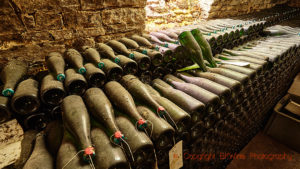 Do you need some inspiration to fins a different bubbly for the festivities (you don’t really need any help to find the big brands, do you?)? Here are a few sparkling wines that we recommend.
Do you need some inspiration to fins a different bubbly for the festivities (you don’t really need any help to find the big brands, do you?)? Here are a few sparkling wines that we recommend.
Champagne Bonnet-Ponson Seconde Nature, ~45 euro. Cyril Bonnet is a very talented winemaker. No sulphur, no dosage. But a lot of character.
Champagne Alexandre Bonnet Grande Réserve Brut, ~30 euro. From the pretty village of Les Riceys in Côte des Bar, the southernmost part of Champagne, a region known for its fine Pinot Noir grapes. Small house with a production of around 600 000 bottles.
Clotilde Davenne Crémant de Bourgogne Brut Extra, ~15 euro. Attractive Crémant from Chablis-based winery with fresh acidity and delicious citrus aromas.
Ferrari Brut Organic, Trentino-Alto Adige, ~16 euro. Italian Chardonny sparkling for those of you longing for the Alps. Ferrari is a successful company that owned by the family Lunelli.
One step closer to list of ingredients on wine bottles?
 Will there soon be a requirement for wines to list the ingredients on the label? The issue has been debated in recent years. (Just to be clear: it is not forbidden to have a declaration of contents, it’s just not compulsory.) Many consumers ask themselves why alcoholic beverages are exempt from the rule that all other packaged foods must follow. If you take a closer look, however, you notice that it is not entirely clear what should be included in a possible list of ingredients.
Will there soon be a requirement for wines to list the ingredients on the label? The issue has been debated in recent years. (Just to be clear: it is not forbidden to have a declaration of contents, it’s just not compulsory.) Many consumers ask themselves why alcoholic beverages are exempt from the rule that all other packaged foods must follow. If you take a closer look, however, you notice that it is not entirely clear what should be included in a possible list of ingredients.
New EU rules, with the number 2019/934, stating what can be done and used during the vinification, came into force on December 7. Under the new rules, three new additives are allowed: potassium carbonate to reduce the acidity, vegetable fibres to remove pesticide residues and the use of inactivated yeast with a guaranteed glutathione level to help the malolactic fermentation. But most interestingly, the EU now notes what is an “additive” and what is a “processing aid”, which can be seen as preparation for a future table of ingredients on labels. An additive, or residue thereof, remains in the wine and would thus be named on the label. One example is sulphites. A processing aid, on the other hand, is removed from the wine before bottling, so it would not need to be named. An example is various clarifiers and enzymes. Read the full EU text.
Mont d´Or, the cheese favourite of the French at Christmas
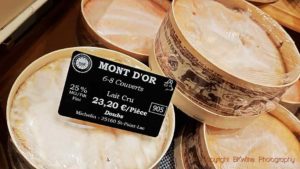 No French dinner is complete without a good cheese. At Christmas, the cheese will probably be a vacherin de mont d’or, an AOP cheese from the Jura mountains. This is a true Christmas cheese and much loved by the French. It is only produced in the autumn and winter. In the spring and summer, the milk from the same cows instead is made into Comté. The cows must graze at an altitude of at least 700 meters. Mont d´Or starts selling in the autumn and is at its best in December, perfectly ripe and more or less runny.
No French dinner is complete without a good cheese. At Christmas, the cheese will probably be a vacherin de mont d’or, an AOP cheese from the Jura mountains. This is a true Christmas cheese and much loved by the French. It is only produced in the autumn and winter. In the spring and summer, the milk from the same cows instead is made into Comté. The cows must graze at an altitude of at least 700 meters. Mont d´Or starts selling in the autumn and is at its best in December, perfectly ripe and more or less runny.
The wine to go with it is, of course, a white Jura. Local combinations often work and not least here, where we have nuttiness both in the cheese and in the wine. If you don’t have a bottle of Jura at home, don’t worry, the cheese will taste just as good with champagne.
More tips on exciting cava from Catalonia
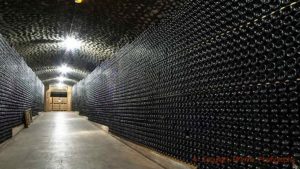 One should not make the mistake to believe that cava is a cheap alternative to champagne. No more than that sancerre is a cheap version of white burgundy (or vice versa). No, cava is its very own wine style, own grape varieties, own terroir. Why not make an inspired and slightly different choice for New Year (or other festivities) and choose a good cava instead of, yes, you know, that other district starting with a “c”? Here are a few suggestions of producers worth trying:
One should not make the mistake to believe that cava is a cheap alternative to champagne. No more than that sancerre is a cheap version of white burgundy (or vice versa). No, cava is its very own wine style, own grape varieties, own terroir. Why not make an inspired and slightly different choice for New Year (or other festivities) and choose a good cava instead of, yes, you know, that other district starting with a “c”? Here are a few suggestions of producers worth trying:
- Pares Balta
- Gramona
- Jane Ventura
- Juve y Camps,
- Bodegas Langa
- Agusti Torrelló
A grape name on the label sells better
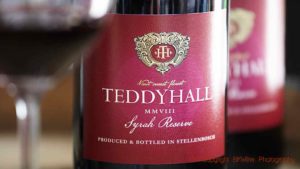 How much does a grape name on the label really mean? A lot. At least some people think so. During the international Chenin Blanc congress that took place in Angers in July, there was much talk about the importance of providing consumers with information on the label and what added value it provides. The still wines of the Loire Valley are exported in a smaller proportion compared to many other French wine regions. Could it be because they don’t put “chenin blanc” on the label?
How much does a grape name on the label really mean? A lot. At least some people think so. During the international Chenin Blanc congress that took place in Angers in July, there was much talk about the importance of providing consumers with information on the label and what added value it provides. The still wines of the Loire Valley are exported in a smaller proportion compared to many other French wine regions. Could it be because they don’t put “chenin blanc” on the label?
In South Africa, a major chenin blanc producer, they definitely believe in giving the customer a lot of information on the bottle, especially the grape name but not only. Surveys there show that information about the terroir and if the wine is made from old vines is also attractive. Maybe Vouvray could tempt new, young consumers if they added chenin blanc under the appellation name? Read more:
The Golden Glass Trophy to Musella in Valpolicella
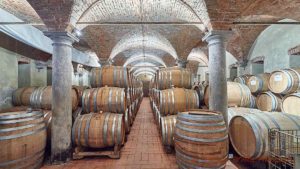 Every year, the Swedish food magazine “Allt Om Mat” (Everything About Food) selects a winery for the “Golden Glass” trophy, an award that goes to a winery that has distinguished itself for high quality and that is available to consumers in Sweden. In 2019 the award went to Musella in the Italian region of Valpolicella. The jury’s motivation reads as follows: “Well-made wines with a sense of origin and a quality focus in all price ranges, as well as an organic and biodynamic approach, despite large volumes”: mynewsdesk. We say a big congratulations!
Every year, the Swedish food magazine “Allt Om Mat” (Everything About Food) selects a winery for the “Golden Glass” trophy, an award that goes to a winery that has distinguished itself for high quality and that is available to consumers in Sweden. In 2019 the award went to Musella in the Italian region of Valpolicella. The jury’s motivation reads as follows: “Well-made wines with a sense of origin and a quality focus in all price ranges, as well as an organic and biodynamic approach, despite large volumes”: mynewsdesk. We say a big congratulations!
Musella is certified organically and biodynamically (through Demeter). The family has 400 hectares of land and, of these, 50 hectares are vineyards and the rest are forest and olive trees. We also think Musella makes excellent wines and the winery is among the producers we like to visit on our wine tours to Veneto.
Swedish Wine Producers’ Association Chairman misquoted in the New York Times
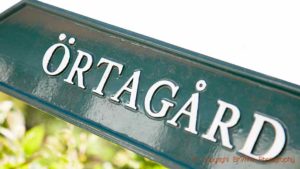 In the November Brief, we wrote about an article on Scandinavian wines in the New York Times. We recounted, among other things, a quote by Sveneric Svensson, chairman of the Swedish Wine Association, uniting many of the Swedish wine producers. Sveneric sent us an email immediately after he read the newsletter to refute this quote. This is what he writes:
In the November Brief, we wrote about an article on Scandinavian wines in the New York Times. We recounted, among other things, a quote by Sveneric Svensson, chairman of the Swedish Wine Association, uniting many of the Swedish wine producers. Sveneric sent us an email immediately after he read the newsletter to refute this quote. This is what he writes:
“In the BKWine Brief 195, I saw the article on that the New York Times wrote about Scandinavian wines. I had not seen [the NYT text] before and was appalled by the quotation that is attributed to me there. I realize that the article has already been published and the damage has been done to that magazine’s readers, but I would like to write to you and contradict the quote [attributed to Sveneric] ‘Swedish wine producers are just happy that they can produce something drinkable’. Instead, I always emphasize that Swedish commercial winegrowers today make wines that are of international quality. I had not the opportunity to proofread the article in the NYT and I really regret that I have not been able to correct this misconception. Probably the reasoning was that we went from hobby growers a number of years ago who were happy as long as they etc …… to where we stand today, focusing on quality, with many international awards.” Indeed an important distinction. We look forward to many new and exciting wines from Sweden.
Eco-friendly cork wins award
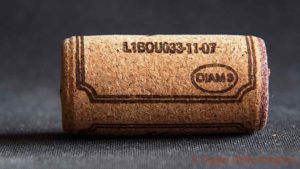 Every year, over 2 billion Diam corks are sold, so chances are you will now and then pull one out of your wine bottle. Diam Bouchage is a French company that 12 years ago introduced a technical invention that eliminates the molecule responsible for the annoying cork taste (2,4,6-trichloroanisole, TCA) from cork granules. Diam could thus start selling agglomerated corks with zero risks of cork taste.
Every year, over 2 billion Diam corks are sold, so chances are you will now and then pull one out of your wine bottle. Diam Bouchage is a French company that 12 years ago introduced a technical invention that eliminates the molecule responsible for the annoying cork taste (2,4,6-trichloroanisole, TCA) from cork granules. Diam could thus start selling agglomerated corks with zero risks of cork taste.
Diam now sells a new cork called Origine by Diam, an environmentally friendly cork that recently won a prestigious award in Milan, the “SIMEI Technology Innovation Award”. Origine by Diam uses a binder that is 100% plant-based and an emulsifying agent made from beeswax. The use of beeswax is one of the company’s environmental projects. Diam Bouchage sponsors hives in various French wine regions. Look for the name Diam on the cork the next time you open a bottle. Read more diam-closures
Does it cost more to be organic?
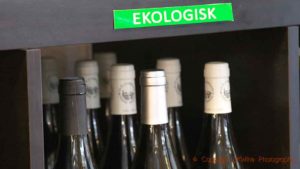 What does it really cost to convert to organic farming? It is sometimes said that “certification is expensive so the producer X works organically but does not certify”. That’s not correct. The certification is a marginal cost. But what about the rest? A French report from consulting firm CerFrance Gard tries to work it out. According to the report, certification and extra working hours are expected to be 800-1000 euro per hectare. An average of 30 hours per hectare per year is required for the work in the vineyard. To this, you have to add investments in, for example, tractors for ploughing. Producers don’t save money on pesticides (although some say they do) because they need to be bought anyway, just other types. They may, however, experience reduced yields but this is not always the case. It depends on a number of things, the weather not least.
What does it really cost to convert to organic farming? It is sometimes said that “certification is expensive so the producer X works organically but does not certify”. That’s not correct. The certification is a marginal cost. But what about the rest? A French report from consulting firm CerFrance Gard tries to work it out. According to the report, certification and extra working hours are expected to be 800-1000 euro per hectare. An average of 30 hours per hectare per year is required for the work in the vineyard. To this, you have to add investments in, for example, tractors for ploughing. Producers don’t save money on pesticides (although some say they do) because they need to be bought anyway, just other types. They may, however, experience reduced yields but this is not always the case. It depends on a number of things, the weather not least.
It is not so easy for most producers to raise the price of their wines, the report says. In any case, not directly and not during the three years that they are converting. Which means that it can be costly if you are unlucky with the weather and the harvest yield is less than before. Even if you take into account the subsidies you receive during the conversion period, which is 350 euros per hectare and year.
But this type of calculation is much more complicated than the report shows. The statistics (bulk) clearly show that organic wines get higher prices, so it can compensate for any higher costs. Equally, many would consider that the quality is increased, which further contributes to a better situation. In some cases, the harvest can also be positively affected. So it is far from a simple equation. Besides, most people do not become organic because it is cheaper, do they? Read more: vitisphere
Platter’s 2020 South African Wine Guide launched
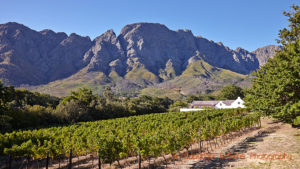 The 2020 edition of the excellent wine guide “Platter’s South African Wine Guide” was launched in November. A total of 125 wines and one brandy received the coveted 5 stars. “Editor’s Award Winery of the Year” went to the well-known Boekenhoutskloof in Franschhoek. “Best newcomer of the year” was Pieter Ferreira Cap Classique. Pieter Ferreira has so far launched one wine, a Brut Chardonnay 2012 with grapes from the Robertson and Darling regions, with 5 years of ageing on the lees. But he is far from a newcomer; on the contrary, he is a true bubble specialist as he is cellar master at Graham Beck and has been for many years.
The 2020 edition of the excellent wine guide “Platter’s South African Wine Guide” was launched in November. A total of 125 wines and one brandy received the coveted 5 stars. “Editor’s Award Winery of the Year” went to the well-known Boekenhoutskloof in Franschhoek. “Best newcomer of the year” was Pieter Ferreira Cap Classique. Pieter Ferreira has so far launched one wine, a Brut Chardonnay 2012 with grapes from the Robertson and Darling regions, with 5 years of ageing on the lees. But he is far from a newcomer; on the contrary, he is a true bubble specialist as he is cellar master at Graham Beck and has been for many years.
Some of our 5-star favourites in the new edition are Gabriëlskloof Elodie Chenin Blanc 2018, Gabriëlskloof Syrah on Shale 2017, Kaapzicht Steytler Vision 2017, Laibach Natural Sweet 2019, Mount Abora Koggelbos Chenin Blanc 2017, Reyneke Biodynamic Reserve Red 2017, Saronsberg Full Circle 2017. The Best Semillon award was give to Rickety Bridge The Pilgrimage 2017 made from almost 100-year-old Semillon vines. Read more wineonaplatter.
Travel: Join us on our South Africa wine tour and visit our favourite wineries. We go in February 2020 and in March 2021.
Features
Features that we have published during the past month, with lots of reading for you.
Historic bottles and traditional gastronomy in Moldova’s amazing underground wine world
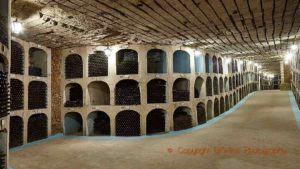 Whatever reason you might have to go visit Moldova, you wouldn’t want to miss the cellars of Cricova and Milestii Mici. These cellars, often called caves actually, are amazing places, whole underground cities. They are an attraction in themselves that you don’t have to be a wine lover to appreciate. Cricova and Milestii Mici are both state-owned and the two biggest wine estates in Moldova.
Whatever reason you might have to go visit Moldova, you wouldn’t want to miss the cellars of Cricova and Milestii Mici. These cellars, often called caves actually, are amazing places, whole underground cities. They are an attraction in themselves that you don’t have to be a wine lover to appreciate. Cricova and Milestii Mici are both state-owned and the two biggest wine estates in Moldova.
Read more on these two extraordinary wine cellars, and watch two videos from visits at Cricova and Milestii Mici, in Britt’s article on BKWine Magazine: Historic bottles and traditional gastronomy in Moldova’s amazing underground wine world.
Uncorked: Good wines we have tasted recently, December 2019
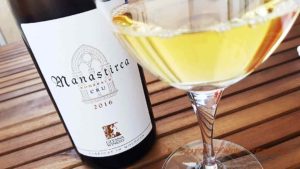 Uncorked: Under this heading, we collect various wines that we have tasted, and liked, recently. It can be wines that we have had during dinner at home, at wine tastings, press lunches, visits to vineyards, or other occasions. We describe the wines just with a few short sentences, tasting notes that we hope will give you a short but accurate impression of what we thought of the wine, without delving into finer points tasting notes.
Uncorked: Under this heading, we collect various wines that we have tasted, and liked, recently. It can be wines that we have had during dinner at home, at wine tastings, press lunches, visits to vineyards, or other occasions. We describe the wines just with a few short sentences, tasting notes that we hope will give you a short but accurate impression of what we thought of the wine, without delving into finer points tasting notes.
This month: Powerful grüner veltliner and an unusually typical Chablis. The Catalan grape xarel-lo shows its magnificence. Classic Margaux from 1981, the unusual grape ancellotta, natural wine made from the Muscadet grape, a top quality riesling from Moldova and a juicy, easy drinking wine from Etna. Read more in Britt’s article on BKWine Magazine: Uncorked: Good wines we have tasted recently, December 2019.
Italian Christmas: pandoro or panettone, that’s the question
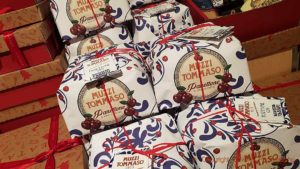 When it is Christmas in Italy, the eternal question is whether it should be pandoro or panettone. The high, sponge-cake-like cake sold in colourful cardboard boxes in every shop from supermercato to small delicatessen shops is a must. But should it be pandoro or panettone? And what is the difference?
When it is Christmas in Italy, the eternal question is whether it should be pandoro or panettone. The high, sponge-cake-like cake sold in colourful cardboard boxes in every shop from supermercato to small delicatessen shops is a must. But should it be pandoro or panettone? And what is the difference?
Read more in Åsa’s article on BKWine Magazine: Italian Christmas: pandoro or panettone, that’s the question.
Wine tours
Some information about current and future wine tours with BKWine.
South Africa, old vines and wines with character | wine tour
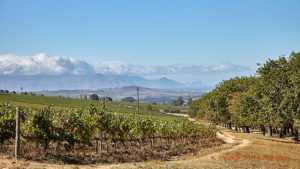 In South Africa, they are increasingly taking care of their old vines and these are seen as a great asset. There are almost 100-year-old vines of mainly Semillon, Chenin Blanc and Cinsault. These vines give elegant wines with character. Of course, not all producers have such old vines. But many of them make exciting wines anyway. This is one reason why South Africa is such an interesting wine country to visit right now. There have never been so many thrilling wines and so many winemakers experimenting, whether with classic grape varieties or more unusual ones. We will see (and of course taste) many examples of this during our journey that will take us from Cape Town down to Elgin and Overberg, to Hermanus and Walker Bay, to Franschhoek and to Stellenbosch.
In South Africa, they are increasingly taking care of their old vines and these are seen as a great asset. There are almost 100-year-old vines of mainly Semillon, Chenin Blanc and Cinsault. These vines give elegant wines with character. Of course, not all producers have such old vines. But many of them make exciting wines anyway. This is one reason why South Africa is such an interesting wine country to visit right now. There have never been so many thrilling wines and so many winemakers experimenting, whether with classic grape varieties or more unusual ones. We will see (and of course taste) many examples of this during our journey that will take us from Cape Town down to Elgin and Overberg, to Hermanus and Walker Bay, to Franschhoek and to Stellenbosch.
South Africa, February 15-23, 2020. Book your wine tour to South Africa now! There will be a new one in March 2021.
Bordeaux, gourmet lunches and grand cru wines | wine tour
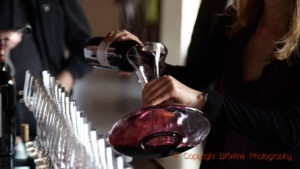 At a glance, this tour in France’s most famous wine region offers you exceptional gourmet lunches and delicious tastings of prestige wines both from grand cru chateaux and from the not-so-famous but equally excellent producers. The tour will also give you an insight into how Bordeaux prepares itself for future challenges, be it climate change, organic farming or competition from other regions. These are really hot topics in all wine regions across the world, and also here, Bordeaux is well advanced. We can promise you some passionate discussions.
At a glance, this tour in France’s most famous wine region offers you exceptional gourmet lunches and delicious tastings of prestige wines both from grand cru chateaux and from the not-so-famous but equally excellent producers. The tour will also give you an insight into how Bordeaux prepares itself for future challenges, be it climate change, organic farming or competition from other regions. These are really hot topics in all wine regions across the world, and also here, Bordeaux is well advanced. We can promise you some passionate discussions.
We have two tours to Bordeaux during 2020:
Champagne, ripe grapes and harvest atmosphere| wine tour
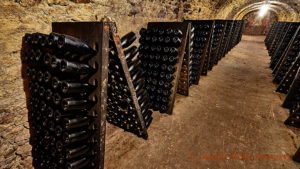 Champagne shouldn’t be drunk only on New Year’s Eve. On our wine tour to Champagne you will learn all about this fascinating wine and we promise you that you will discover new flavours and styles. Our tour is in September and the harvest is either underway or about to get started. So, expect a lot of activities outside in the vineyards as well as in the cellars. A perfect time to visit the Champagne region.
Champagne shouldn’t be drunk only on New Year’s Eve. On our wine tour to Champagne you will learn all about this fascinating wine and we promise you that you will discover new flavours and styles. Our tour is in September and the harvest is either underway or about to get started. So, expect a lot of activities outside in the vineyards as well as in the cellars. A perfect time to visit the Champagne region.
Join us in Champagne, September 16-20, 2020
Plenty of sun, lovely weather, delicious wines and wonderful landscapes on the winter wine tours in 2021
 We can now give you a sneak peek of wine tour in winter 2021. The dates for our far-away wine tours in winter 2021 are finalized but we are still working on the final details of the programmes. It will be three magnificent tours to the southern hemisphere. Three excellent excuses to get away from the dark and cold winter in the north. As if an excuse was needed. These are simply three very special wine tours that show you a lot of the countries we visit, as well as the wines and the gastronomy.
We can now give you a sneak peek of wine tour in winter 2021. The dates for our far-away wine tours in winter 2021 are finalized but we are still working on the final details of the programmes. It will be three magnificent tours to the southern hemisphere. Three excellent excuses to get away from the dark and cold winter in the north. As if an excuse was needed. These are simply three very special wine tours that show you a lot of the countries we visit, as well as the wines and the gastronomy.
- South America, Chile and Argentina, January 18–31, 2021
- New Zealand, February 18–March 5, 2021
- South Africa, March 17–26, 2021
Come back to BKWine Wine Tours soon the see the full details.
Don’t be an egoist! Share with your friends and other wine enthusiasts! Forward the Brief to your friends! Suggest that they sign up for a free subscription !
© Copyright BKWine






